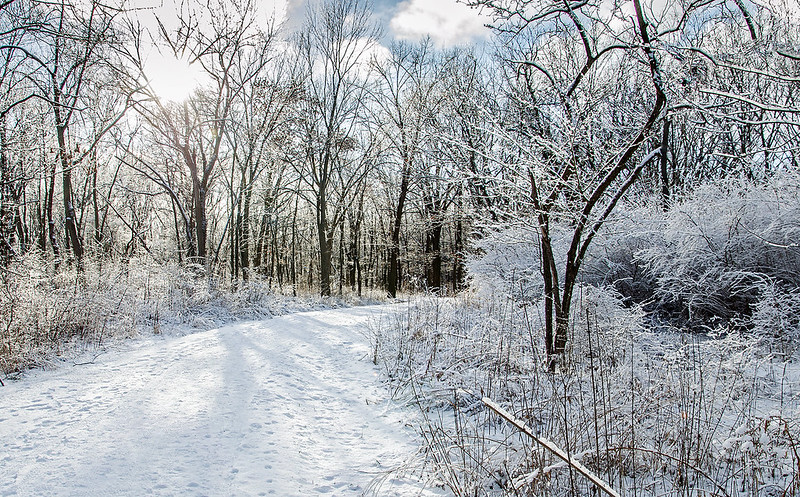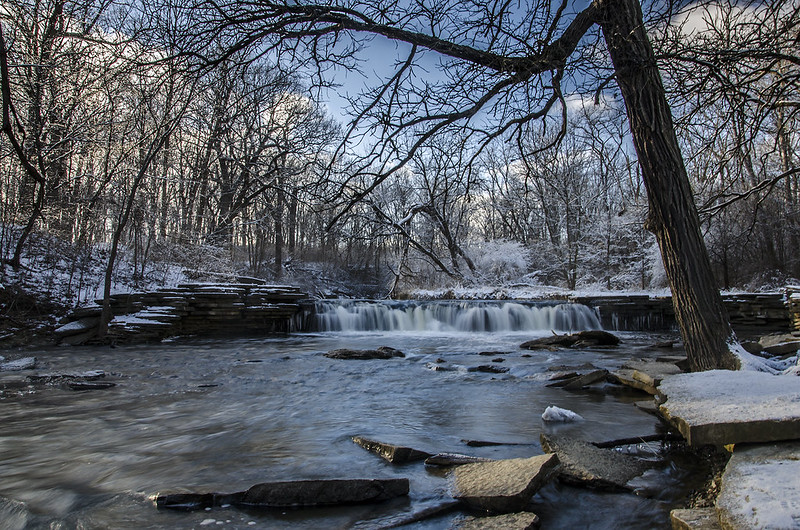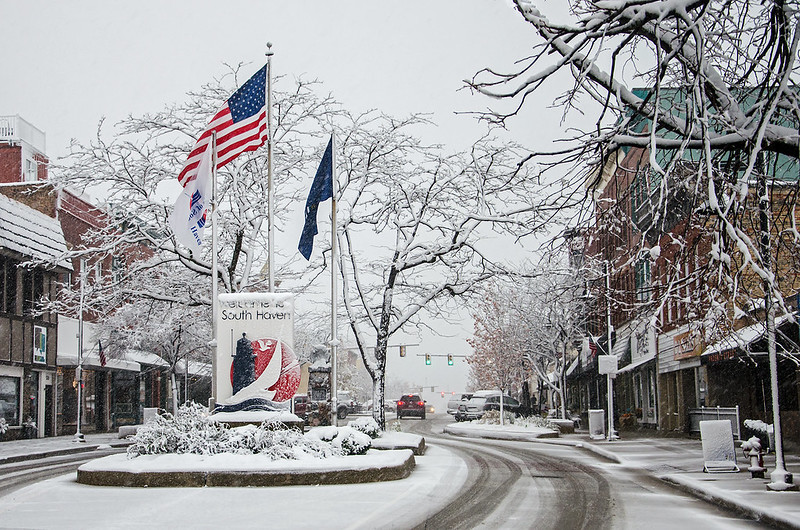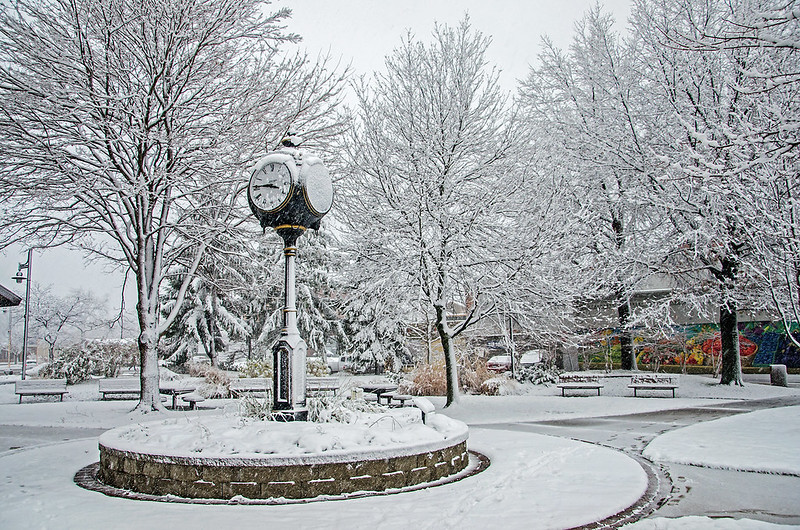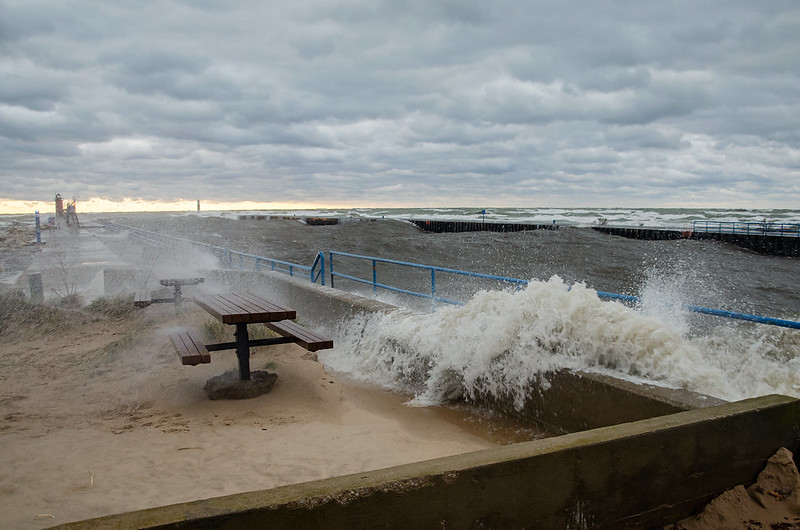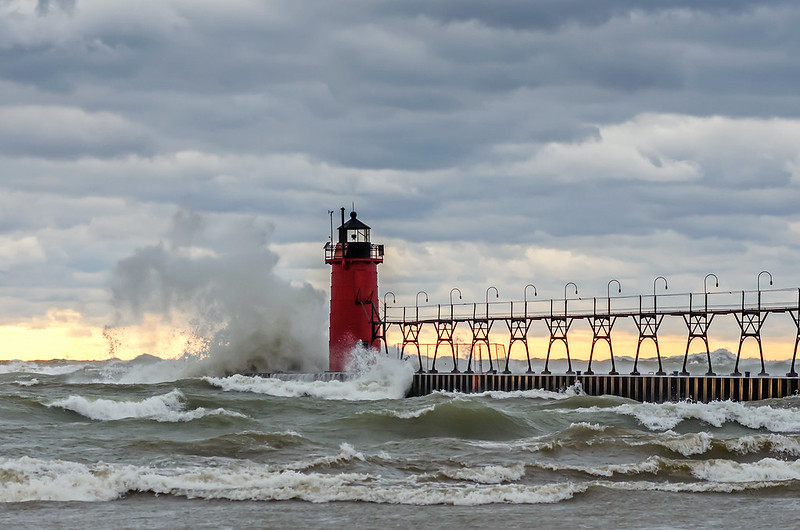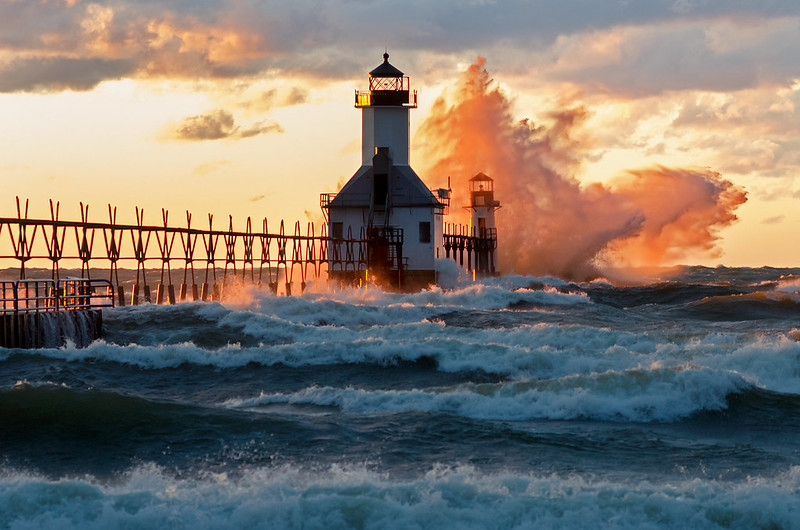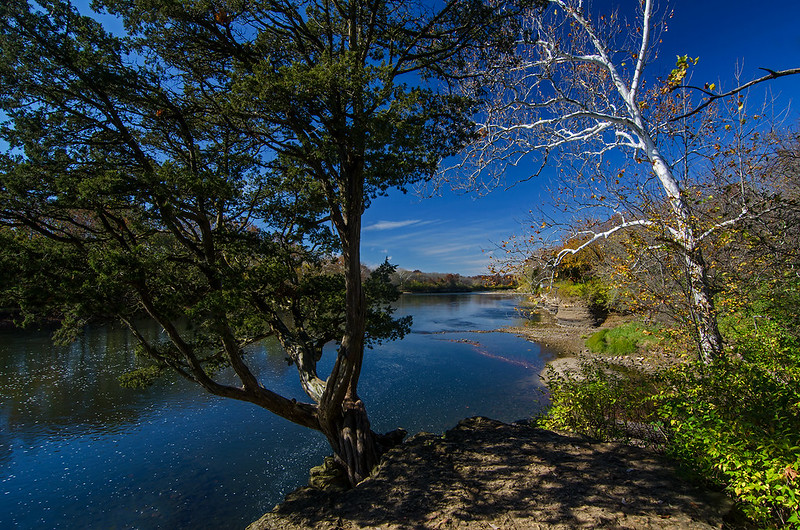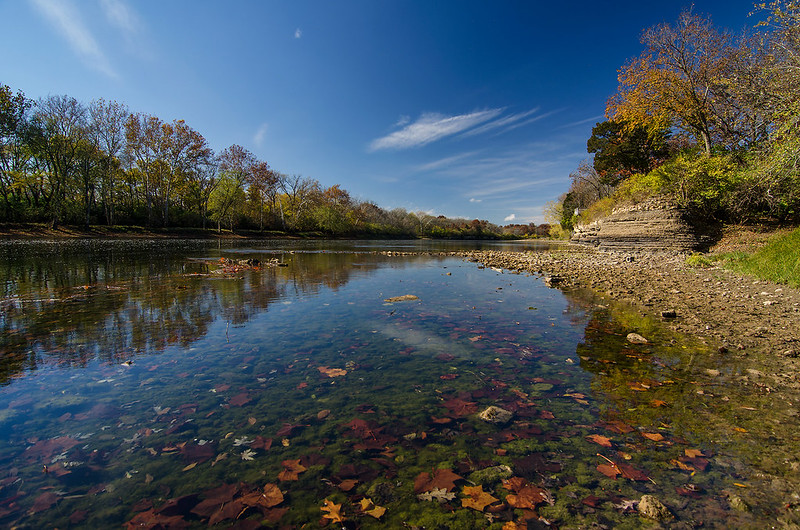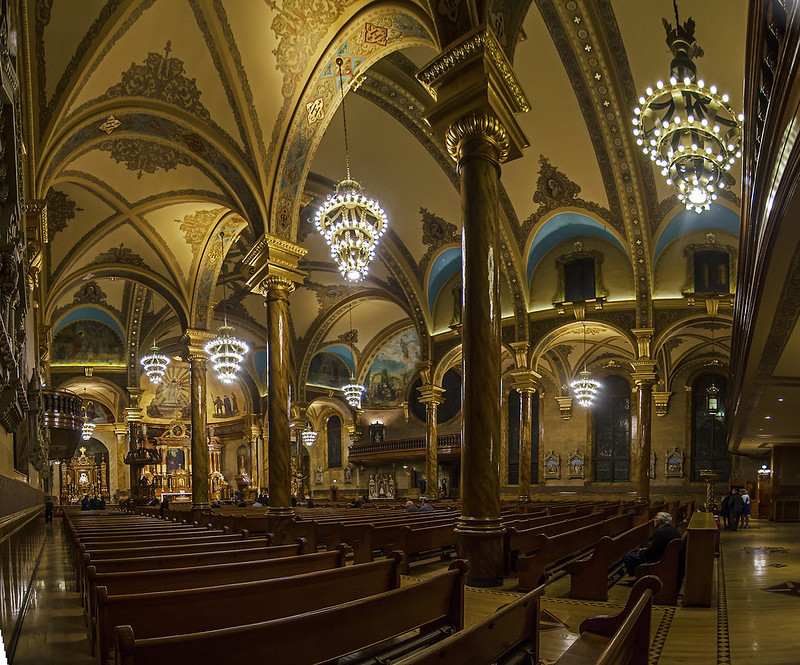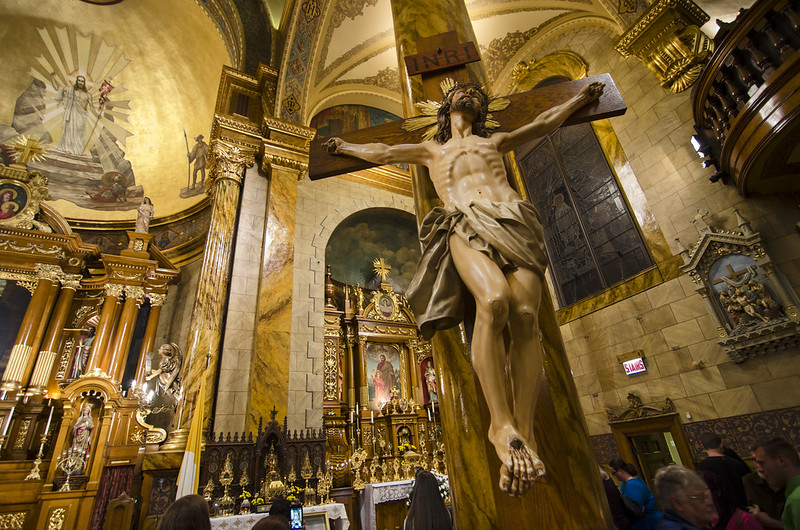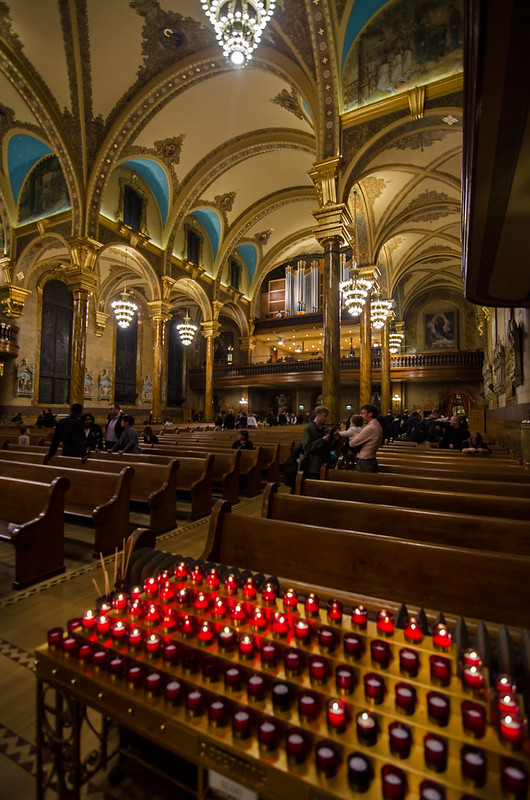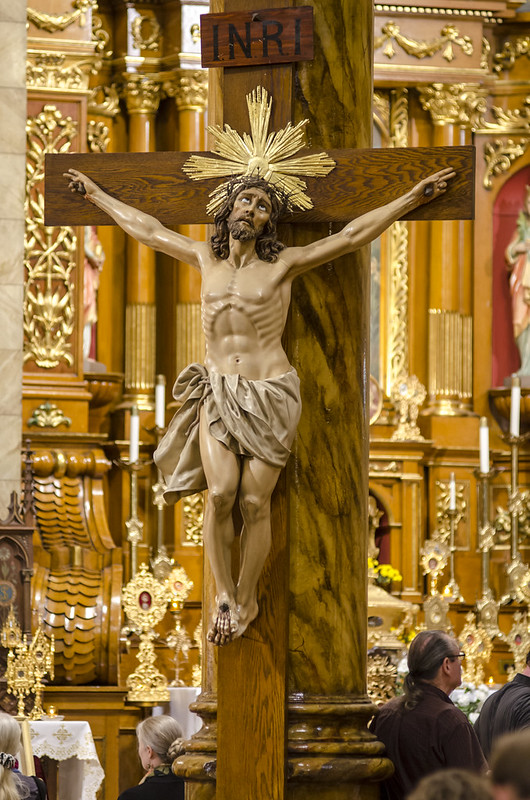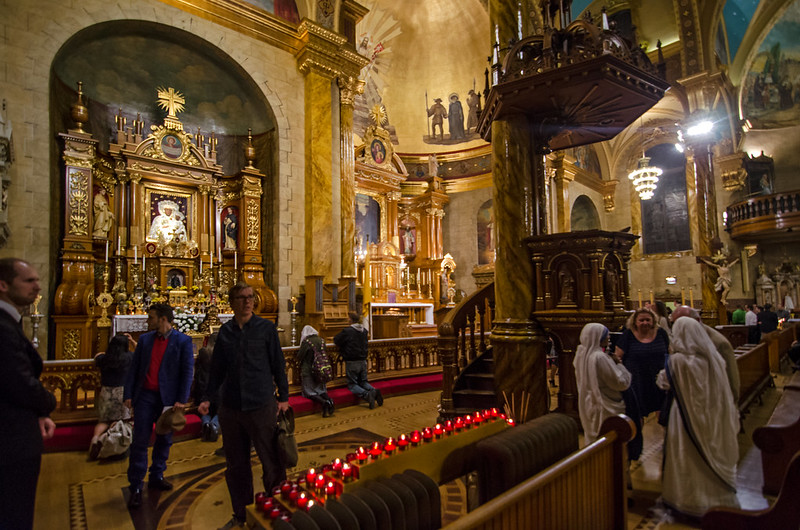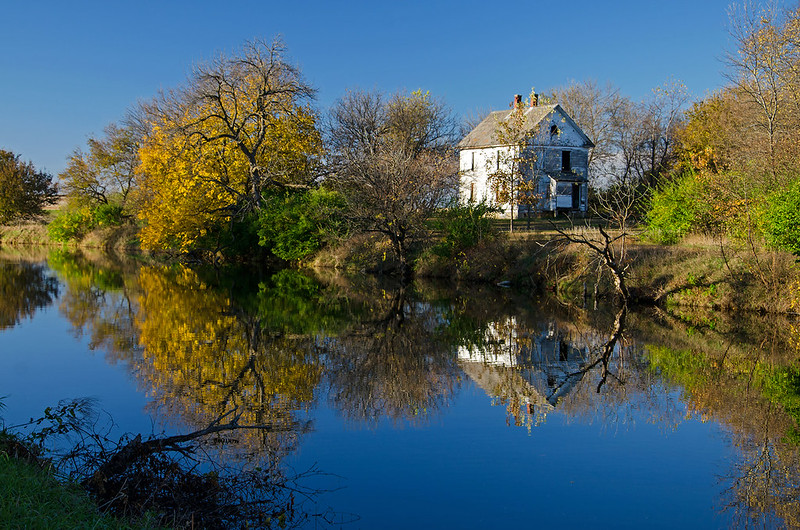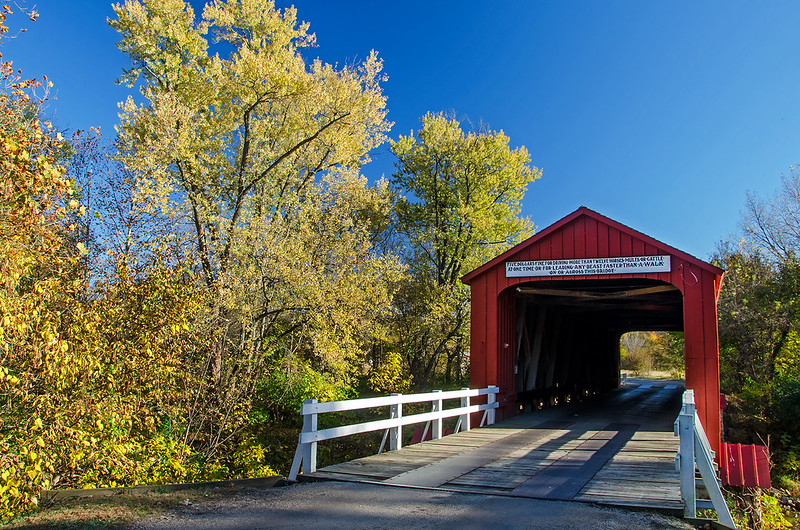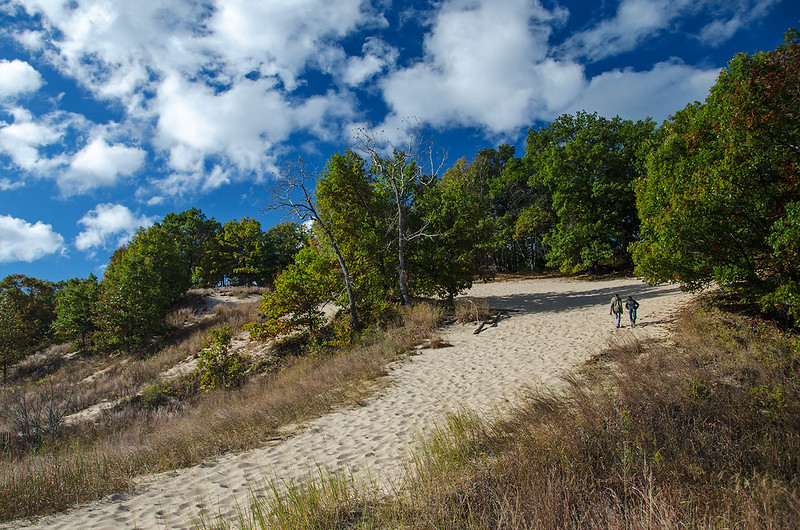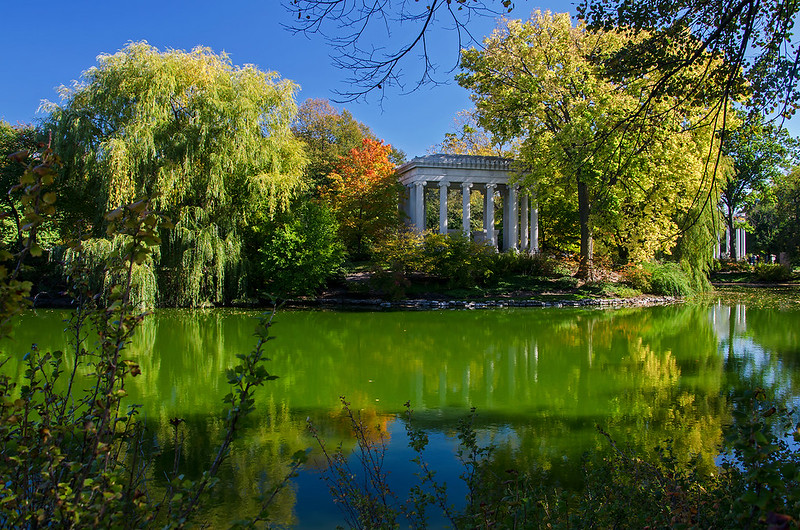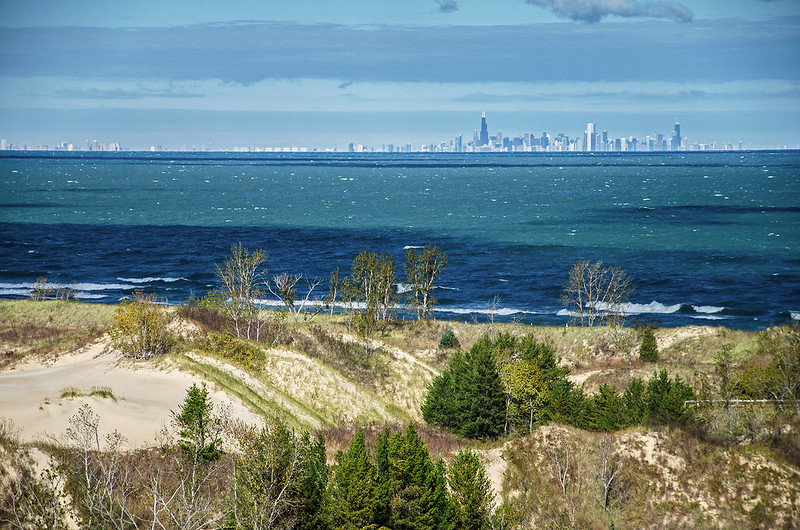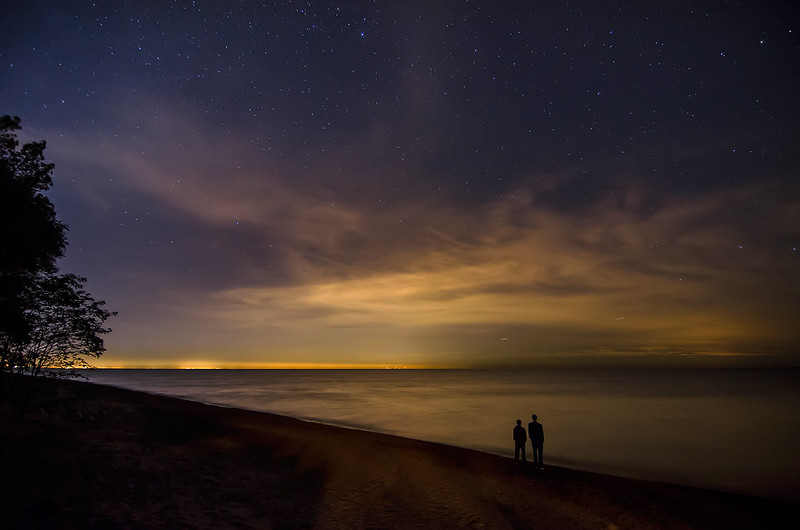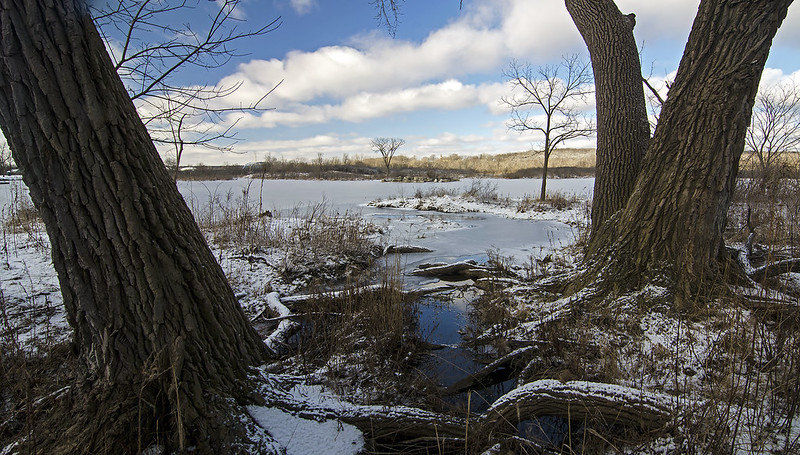
Walking along the rim of the old quarry on a very cold afternoon, we spotted some old, and very large cottonwood trees. We've been to this location numerous times, and never tire of the view through the trees.
The trees are on either side of a small creek that only runs during wet times, and their V formation seems to frame several interesting objects in the distance. The quarry lake itself, now a popular place for fishing in summer and winter; a pile of cut stone left over from quarrying days; the steel bridge over the canal; and St. James of Sag Bridge church (seen on the hill in the distance).
I was surprised that we were the only people around the lake on this morning, and judging by the lack of footprints in the snow, for at least a day or two. This lake is one of around 20 lakes in the Cook County Forest Preserve District that allow ice fishing, but I guess the ice just wasn't thick enough for any fishermen - which is surprising, since I've seen people on this lake in early December some years.

